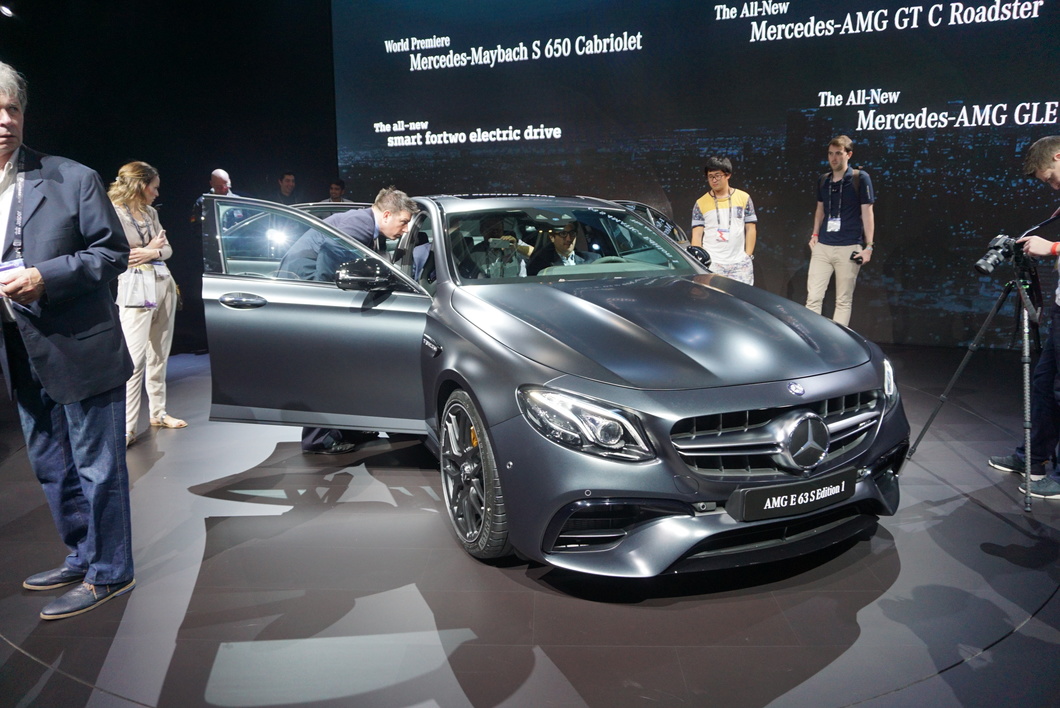When it launched the current-generation E-Class, Mercedes-Benz hyped the luxury sedan’s advanced driver-assistance tech. But Mercedes didn’t forget about people who view driving as a pleasure, rather than a chore to be delegated to electronics.
The 2018 Mercedes-AMG E63 debuting next month at the 2016 Los Angeles Auto Show is all about performance. Its idea of a driver-assist system is “Drift Mode” which, while admittedly an idea copied from the Ford Focus RS, gives you an idea of what the E63 is all about.
Giving the E63 the power to drift is the same 4.0-liter twin-turbocharged V8 used in the AMG C63 and AMG GT sports car, hooked to a nine-speed dual-clutch automated transmission and a performance-tuned version of Mercedes’ 4Matic all-wheel drive system. The standard E63 has 563 horsepower and 553 pound-feet of torque, while the E63 S boasts 603 hp and 627 lb-ft. That makes it the most powerful E-Class model ever, although it’s still shy of the 640 hp and 630 lb-ft of the rival Cadillac CTS-V.
But that’s still plenty of power. Mercedes says the base E63 will do 0 to 60 mph in 3.4 seconds, while the E63 S takes just 3.3 seconds. Top speeds are electronically limited to 155 mph in the E63, and 186 mph in the E63 S. Mercedes also equipped both E63 variants with an AMG-tuned suspension based on its Air Body Control air ride system. Along with the all-wheel drive system’s traction, that should make the E63 fairly good in the corners as well.
Now about that Drift Mode. It’s standard on the E63 S, and sends all of the power to the rear wheels when activated, making tire-smoking sideways action possible. To do this, the car must be in “Race” mode with the stability control turned off, and the transmission in manual-shift mode. Unlike the Focus RS, the E63 is based on a rear-wheel drive platform, so drifts may feel more natural than they do in the Ford.
Styling changes are relatively subtle. The E63 is distinguished from other E-Class models by a new front fascia, model-specific grille, and flared wheel wells to accommodate the car’s wider track width. The alterations give the E63 a fairly aggressive look, but without going too far.
Following its debut at the 2016 Los Angeles Auto Show, the 2018 Mercedes-AMG E63 will go on sale next summer. Pricing information will be available closer to the launch date.






